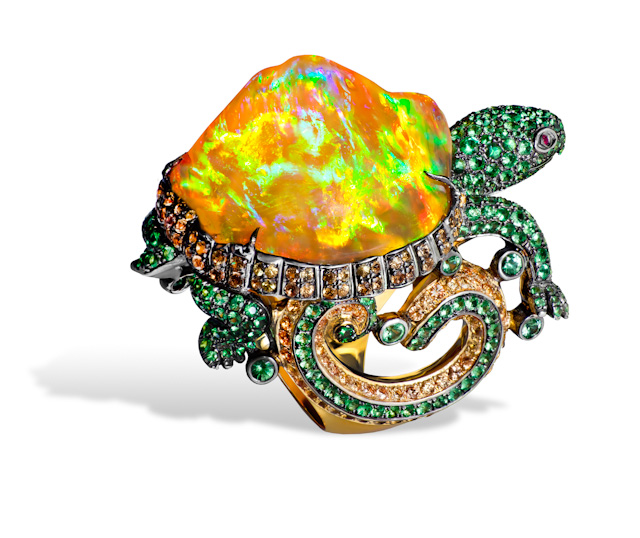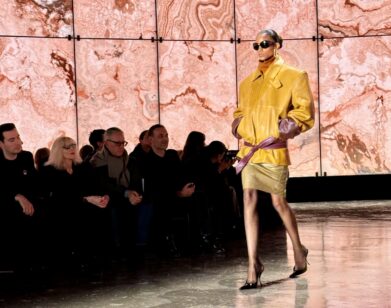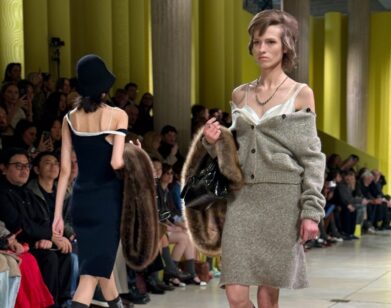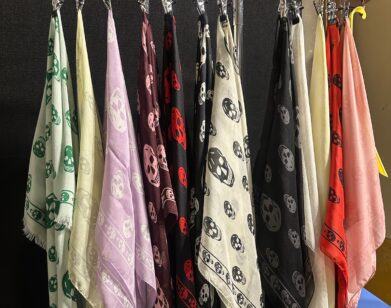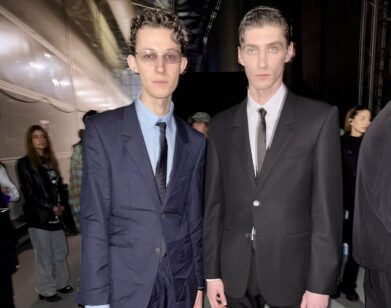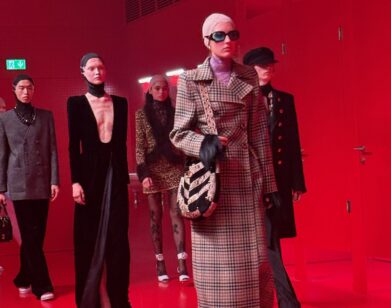The Opal of Lydia Courteille’s Eye
Gobstopper cocktail rings the colour of a lacquered summer sky, brooches in white gold settings with skeletons rendered through orange garnets, sapphires and Vietnamese rubies—Lydia Courteille’s jewelry revels in its status as truly original, fine joaillerie. After cutting her teeth as an antiques dealer, the Paris-based Courteille began to redesign the heirloom cameos of her friends, turning them into rings embellished with the 18th-century gems she collected. After gaining rapid popularity in Paris and abroad, the designer went solo, launching her eponymous label with collections inspired by the Mexican gardens of Xochimilico and the Amazon jungle. As Lydia unveils her Fall/Winter 2013 collection, Interview caught up with the designer to talk about philosophy, her new direction, and color.
GRACE BANKS: Congratulations on your new collection, “Deep Sea.” In your trademark style, you bring nature to life through jewels, how are the new pieces different?
LYDIA COURTEILLE: There is a mysteriousness in this collection that I have not explored before. I’m in love with opals, and each hazy stone tells a story. I’ve used Mexican boulder opals, which have an aquatic quality—the gems look like a small aquarium or a photograph of the deep sea. There is an enigmatic mood in these stones, magical and mysterious like the legend of Atlantis. I think of all opals, boulder opals are my favorite, particularly in orange and blue. I knew they would work well on these sea-inspired designs.
BANKS: The tale of Atlantis is a cautionary one—did you intend to create a contrasting mood?
COURTEILLE: Yes, I always try and present both the exotic and dark aspects of humanity and nature. Jewelry is supposed to show the sweet, glamorous side of life, but my pieces are between fine jewelry and art. It’s crucial that they show the dark and subversive side of the modern times we live in; the century is violent, and I show that in my work.
BANKS: Where did this outlook come from?
COURTEILLE: My style has very naturally developed, informed greatly by my life and I suppose luck, too. One day I bought an antique watch and it didn’t work. I took it back to the seller and we ended up becoming very good friends. It was the beginning of my interest in antiques. I began to deal antique jewelry from the 16th to the 20th century, and I developed a mental dictionary of jewels. I think being around these very old pieces was a trigger for my creativity. It made me see the political side of jewelry, that it can communicate a message as well as being very pretty. I also worked for a few years in a cancer research unit, and this provided a biological approach to my work.
BANKS: Your skeleton designs would testify to this…
COURTEILLE: Yes exactly. I’m interested in the cycle of nature and life; nobody is here forever. I’m fascinated by the memento mori, the idea of a beautiful trinket that reminds us that death is inevitable. Whatever you are, beautiful or not, rich or poor, everyone will end up the same. One of my designs illustrates two skeletons talking together, I want these pieces to be an example of what we call in France, intemporel—the timeless and eternal quality of life.
BANKS: How does fine jewelry lend itself to your vision?
COURTEILLE: The materials and stones that are used elevate my ideas. I start by sketching all of my designs, but the jewels are what bring them into life. I work with traders across the world from China to Australia. It’s the otherworldly quality of the gems that complete the design.
BANKS: Previous collections have included a homage to surrealism. Do you enjoy exploring society and pop culture?
COURTEILLE: Yes, very much. I believe all great art looks to the past. I like to adapt the concepts of the artists that inspire me, embellish them, and make them into new meanings. Having said that, I am not obsessed with history, I simply like to be informed by it. l take into account the antique methods of creating jewelry and I then mix it with modern stones and new technology. The surrealists will always be an inspiration of mine—I like to put a touch of rebellion in my jewels. The surrealist collection came about from my passion for Max Ernst, Dali, and Magritte. Hieronymus Bosch is also a great inspiration of mine, my influences are diverse. For example, my upcoming collection for Spring/Summer 2014 is sweet and sour—for which I’m working with purple, yellow and lots of colour—and philosophy. The philosophy pieces are a tribute to George Orwell, his ideas and strength. It’s a very exciting collection, but that’s all I’m going to say about it!
FOR MORE INFORMATION, VISIT LYDIA COURTEILLE’S WEBSITE. VIEW A SELECT COLLECTION OF LYDIA’S WORK AT COUTURELAB IN BELGRAVIA, LONDON THROUGH DECEMBER 31.

